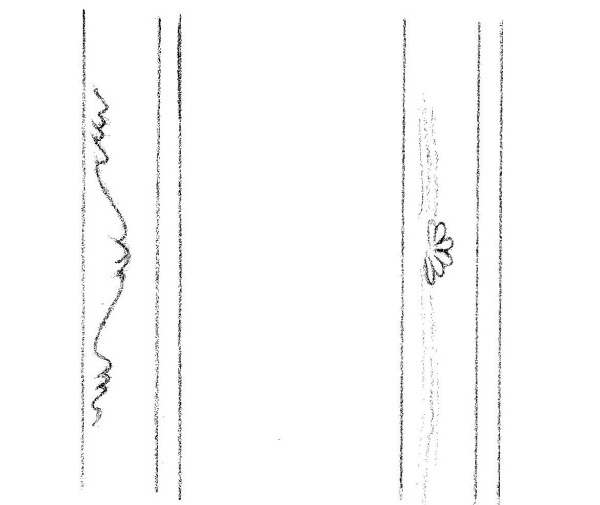The circle indicates the subject discuss in this section
The previous chapter 25 stated that the Edo period was from 1603 to 1868. This is for political history. As seen in the third timeline above, the Momoyama period overlaps the Edo period. Some people think the Momoyama period was from 1573 to 1600. In terms of general history, there are several opinions on how to divide these transitional periods. For sword history, it is clear cut. The swords made between approximate 1596 (慶長: Keicho era) and 1781 (天明: Tenmei era) are called Shin-to. The swords made between the Tenmei era and the Meiji is called Shin-Shinto.
After Toyotomi Hideyoshi almost completed to unite the country, people could enjoy a peaceful time. This quiet time changed the geographic distribution of swordsmiths where they lived. There were three major areas where the sword forging took place. Those were Kyoto, Osaka, and Edo (Tokyo today) areas. The rest of the swordsmiths gathered around near major Daimyos’ (大名: feudal lord ) castles.
Kyoto—- Umetada Myoju (梅忠明寿) group thrived, followed by the swordsmiths like Horikawa Kunihiro (堀川国広), Kunimichi (国路 ), Kunisada (国貞), and Kunisuke (国助).
Osaka—– Osaka was established as a commercial city and became the center of commerce. They produced swords and distributed them to the other regions in the country. Swordsmiths in Osaka : Tsuda Sukehiro (津田助広), Inoue Shinkai (井上真改).
Edo—-Many swordsmiths gathered in Edo (江戸: current Tokyo) where Shogun Tokugawa Iyeyasu lived. The well-known swordsmiths in Edo at that time : Nagasone Kotetsu (長曽祢虎徹), Yasutsugu (康継), Noda Hannkei (野田繁慶).
By the time the grandson of Tokugawa Iyeyasu, Tokugawa Iyemitsu, became the shogun (寛永:Kan’ei era 1624 – 1643), swordsmiths spread out to other provinces than three areas mentioned above. In each significant Daimyo’s territory, swordsmiths had their shops near the castle and fulfilled the demand for daimyo and subjects. By the Genroku era (元禄: 1695), the swords-making declined, and people demanded more picturesque Hamon designs, such as Kikusui (菊水: flower design) and Fujimi (富士見: Mount Fuji).

Difference between Koto and Shinto
The next section describes the difference between Ko-to and Shin-to. But keep in mind, there are always exceptions to this rule.
1. The length of the Shinto Katana is usually about 2 feet and 3 inches ± a little. Wakizashi is 1 foot and 6 inches ± a little. Shallow curvature. Wide width. Thick body. Gyo-no-Mune. Chu-Gissaki with a slightly stretched look.
2. Koto sword feels light. Shinto feels heavy.
3. For Shinto, Bo-hi ends a little below the Yokote line. The Bottom of Hi rounded at above Machi.

4. In general, for Shin-to, carvings are less common. Except, some swordsmith are famous for its carving. The design is refined and in detail. Umetada Myoju (埋忠明寿) is famous for its carvings.
5. For Shin-to, if it is mainly made with Nie, it is coarse Nie
6. Around the Machi area, Hamon starts with a straight tempered line (the bottom part of the blade in the illustration below), then Midare, or different types of Hamon comes in the middle, and it finishes with Suguha (straight hamon) in the Boshi area (the top part). In general, this is the standard Hamon style of Shin-to, but there are always exceptions.

7. For Shin-to, the blade had the same kind of iron throughout Japan. Not much variations of iron were used throughout Japan. Very hard, dark color, and glossy look.
8. The Nakago has a properly balanced shape. The bottom of Nakago narrows down gradually. The type of Yasurime (file mark) is Kesho-yasuri. Engraved inscriptions show the swordsmith’s name, the location, and the province, with the year it was made..

